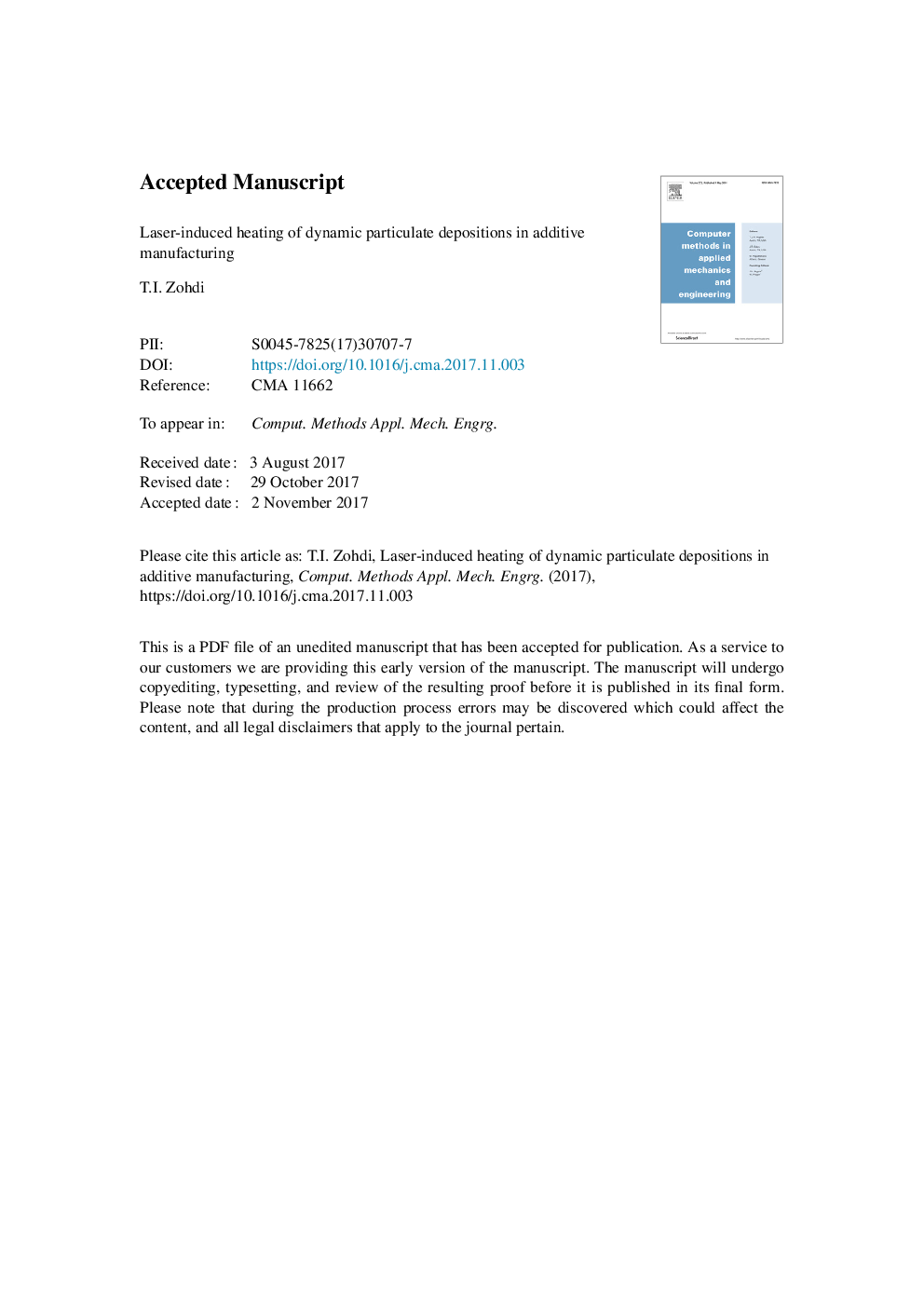| کد مقاله | کد نشریه | سال انتشار | مقاله انگلیسی | نسخه تمام متن |
|---|---|---|---|---|
| 6915643 | 1447404 | 2018 | 38 صفحه PDF | دانلود رایگان |
عنوان انگلیسی مقاله ISI
Laser-induced heating of dynamic particulate depositions in additive manufacturing
ترجمه فارسی عنوان
حرارت دادن ناشی از لیزر از رسوبات ذرات پویا در تولید افزودنی
دانلود مقاله + سفارش ترجمه
دانلود مقاله ISI انگلیسی
رایگان برای ایرانیان
کلمات کلیدی
ذرات، رسوب پویا، لیزر، گرمایش
موضوعات مرتبط
مهندسی و علوم پایه
مهندسی کامپیوتر
نرم افزارهای علوم کامپیوتر
چکیده انگلیسی
Many applications in additive manufacturing involve the dynamic deposition of powders and the in-flight heating of such material by a laser. In order to characterize such systems, the Discrete Element Method (DEM) is employed. Specifically, this paper focuses on the initial stages of this process by developing a modular discrete-element type multiphysics simulation method for the particle dynamics and heating by a laser and detailed thermal behavior. The objective is to provide researchers with a framework to construct computational tools for this growing industry. In order to achieve this, from a simulation standpoint, the overall particle-mixture system is constructed by coupling submodels for each primary physical process (dynamics and heating) together. An iterative staggering scheme is developed whereby, within every time step, each individual particle is solved “freezing” the state of the remaining multiparticle system. The state of the particle is then updated and the algorithm moves to the next particle in the system and the process is repeated. The overall process sweeps through the entire system repeatedly until convergence is achieved in an appropriate norm. As the system evolves, an error estimate dictates the time-step size that is needed to induce convergence to below an appropriate error level. Thus, the process can be considered as an implicit time-stepping scheme, which is combined with an (internal) iterative staggering process. In order to control rates of convergence within a time-step, the algorithm adjusts the time-step size. If the iterative process does not converge within a desired number of iterations, below an error tolerance, the time-step is reduced. The degree of time-step reduction is determined by utilizing an estimate of the spectral radius of the coupled system. Since the construction of model and solution process is modular, one can easily replace physical submodels with other choices, making it easy to numerically experiment with a variety of models. Qualitative and quantitative analyses are provided, as well as three-dimensional numerical examples. This paper addresses the first of two overall “macrostages” of a complex manufacturing process with DEM. The first stage, addressed in this paper, concentrates on dry-powder materials, which are of a discrete particulate character, using DEM to characterize the deposition and in-flight particle heating. Other papers of the author (Zohdi, 2010, 2013, 2014, 2015 [81,82], 2008) have addressed stage two, namely phase transformations, curing (cooling) and stress analysis, using more appropriate continuum and hybrid DEM-continuum approaches.
ناشر
Database: Elsevier - ScienceDirect (ساینس دایرکت)
Journal: Computer Methods in Applied Mechanics and Engineering - Volume 331, 1 April 2018, Pages 232-258
Journal: Computer Methods in Applied Mechanics and Engineering - Volume 331, 1 April 2018, Pages 232-258
نویسندگان
T.I. Zohdi,
